On the occasion of the European Crafts Days (March 31, April 1 and 2, 2017), the magazine Connaissance des Arts presents its special issue devoted to crafts in France, including six beautiful pages dedicated to Jean Perzel Workshop.
A look back at their report, in our workshops in the basement of the beautiful Art Deco building with a view of Montsouris park, which the brand has occupied since 1931.
“Portfolio : Perzel, and there was light”
Since 1923, Perzel, a bronze and art glassmaker, has produced lighting fixtures. Here, we know neither the series nor the reissues, each lamp that leaves the workshops is a unique piece, entirely crafted in the basement of the beautiful Art Deco building with a view of the famous Montsouris park, in Paris.
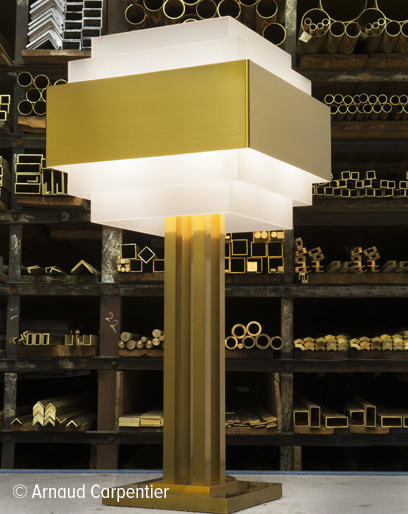
The Lamp No. 944
The sublime lamp 944 is emblematic, in more than one way, of the Jean Perzel art workshops. Created in the 1970s by François Raidt, it is the heir to the famous collection lamp No. 144 designed in 1926 by the master, an iconic model whose wings spread out to better spread the light.
Homage, inspiration, variation, the No. 944 embodies the entire spirit of the Atelier Jean Perzel and proves, if necessary, through its architectural lines, that elegance stands the test of time. Signed, like all the workshop’s production, it is also numbered. To date, one hundred and eighty copies, duly registered, light up a living room or an office around the world. Behind it, we see the rack of bronze and brass profiles, most of which are exclusive to the house.
.
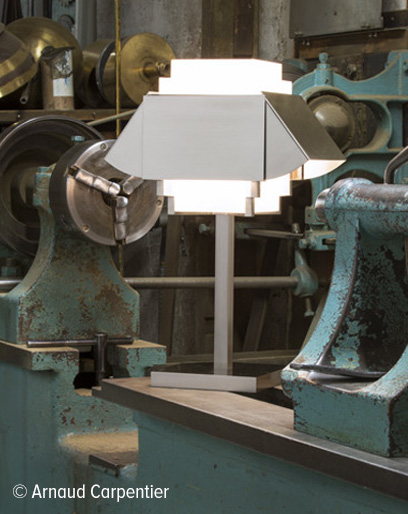
The lamp No. 144
The extremely famous No. 144, dating from 1926, whose fins, once closed, form a square, distribute the light in a more targeted way. Each piece of beveled optical glass is removable and slides independently. This aesthetic jewel is also a marvel of high electrical technology, guaranteed by state-of-the-art security installation.
It shines in front of a embossing lathe which is used to model a bronze or brass board. The desired shape is given using a mandrel, some of which, made of wood or steel, have been used since the 1920s. They were designed by Jean Perzel himself.
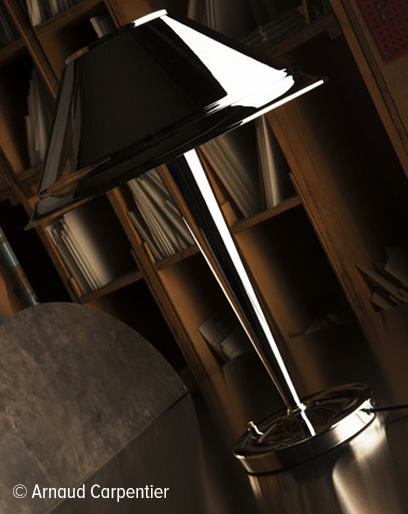
The Lamp No. 817 M
The 817 M is a child of the post-war period (1950s) which has become part of French heritage: the Mobilier National (a French government collection) purchased it to furnish state residences. Desk lamp, it can have around twenty finishes: shiny chrome like here, but also gold varnish, gunmetal, red copper, which considerably change its appearance and allow it to adapt to all decors. In the background, the lockers where scraps of glass are stored, dating from 1923 to the present day, ready to be recut with diamonds, transformed for collectors whose lamp has suffered an accident.
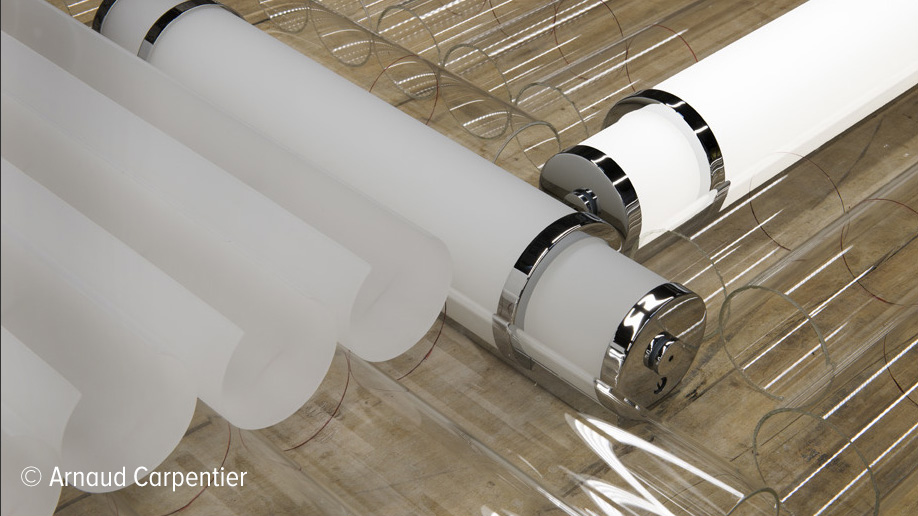
Wall lights No. 1252
Linear wall lights (here with double cylinder) are an original invention by Jean Perzel in 1928. They are real collector’s items, the tubes of which we see here, still transparent and uncut or already sandblasted by hand on both sides. The glass used by the Atelier Jean Perzel is not ordinary glass. Optical, crystal quality, it spreads an exceptional luminosity that only the nobility of the material allows. The comfort of vision and the respect for the colors it provides were one of Jean Perzel’s primary requirements. “A beautiful light changes life” concludes Olivier Raidt, third generation to hold the torch. Perzel, craftsman of happiness?
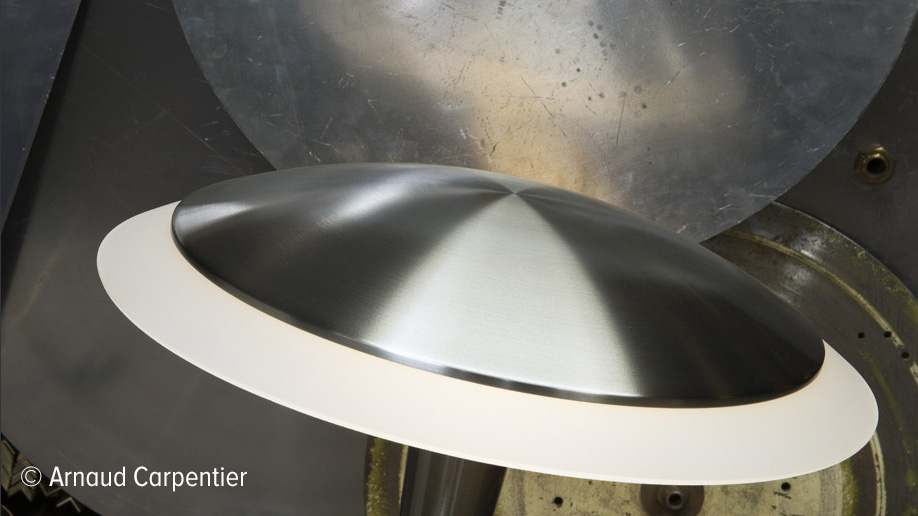
The Lamp No. 514
Lamp head in satin silver finish (all Perzel lamps are in bronze) with a cut, curved and sandblasted optical glass cup. With its slender, pure line, its perfect assembly and the nobility of its materials, the No. 514 seduced the 1930s: it was created and launched for the Normandie liner. This is not an isolated fact: the Perzel house supplied the League of Nations in Geneva, the residences of the Maharajah of Indore and the King of Siam, the court of Belgium and many other celebrities whose name remains carefully guarded in its archives.
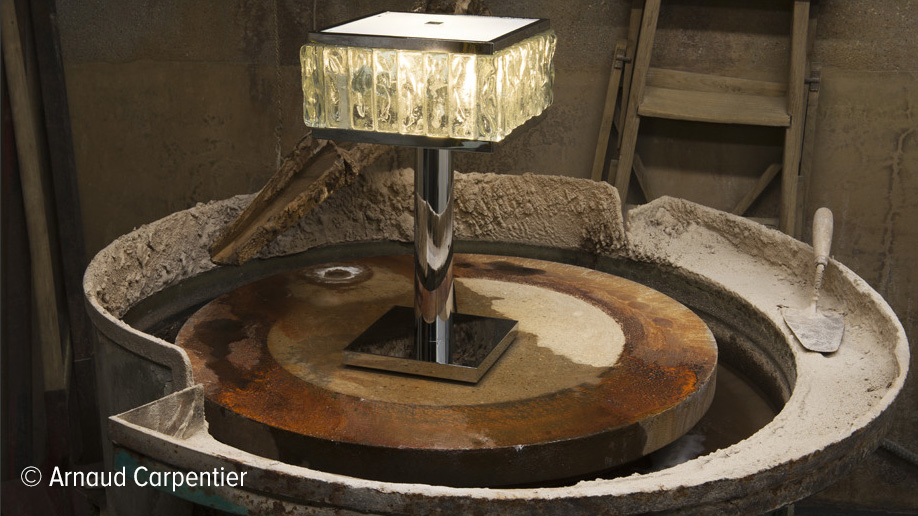
The Lamp No. 2060 L
Created in 2016 by Olivier Raidt, the lamp with crystal slabs asserts itself as a reminder of the wall and ceiling lights that illuminated the 1970s. Sober, refined, it also responds in every way to the creator’s requirements regarding the functionality of the lighting. With Perzel, the quality of light, which can reach up to 250 adjustable watts, allows a small lamp to illuminate 30 to 40 m², a revolution in the world of lighting. It is here placed on the lapidary, a large grinding wheel over ninety years old, which is used to cut and sculpt optical glass using the abrasive paste, composed of silica and water, poured onto the wheel. All the companions experienced this machine, a necessary step to feel, like a diamond cutter, the soul of the material.
© Texts by Valérie Bourgault, Photos by Arnaud Carpentier
Source: Connaissance des Arts Special Editions Métiers d’Art 2017.

